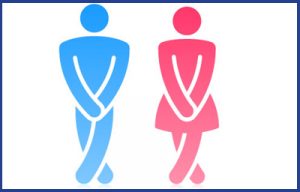
A condition that’s still too embarrassing to discuss
A Newspoll survey1 conducted on behalf of HARTMANN, makers of MoliCare Mobile®, reveal that despite the fact 4.8 million2 Aussies experience incontinence, only 12% of those surveyed actually said they know someone with the condition, indicating the topic remains ‘off-limits’ and not openly discussed.
The National Incontinence Report by HARTMANN showed nearly 80% of Aussies think people with incontinence should visit a doctor for advice however in reality, approximately 70% of incontinence sufferers do not seek advice from a GP or health care specialist for their condition. It is common practice for people with incontinence to ‘self-diagnose’ their condition and attempt to treat it with minimal knowledge of products, skin creams and other support services available to them.
Commenting on the range of feelings often associated with incontinence, Media Presenter and Sydney GP Dr Penny Adams said; “It’s important to remember as a person experiencing incontinence, you are not alone and that help is available. The right products and the right advice are the keys to managing it better. Once the right advice is sought, a person with incontinence can more effectively get on with their everyday life and continue enjoying usual activities.”
Incontinence is set to rise to more than 6 million (or 27% of the population) aged 15 and over, by 20304.
In the lead up to World Continence Week, 23 – 29 June the survey showed that awareness of incontinence remains low.
- Just 12% admit to knowing someone with the condition, despite the reality that 4.83 million Aussies experience incontinence. This implies the condition remains too embarrassing to discuss
- 6 in 10 admit that incontinence is a social taboo that is rarely talked about
- Only 16% correctly think that the majority of women with incontinence are under 50 years of age
- 1 in 5 correctly saying the condition affects more than 20% of the population
Pain that’s more than skin deep
Another key finding of The National Incontinence Report by HARTMANN, showed 57% of people have no knowledge, and a further 20% have an incorrect perception of incontinence associated skin complications and the impact this has on health and wellbeing.
Dr Penny Adams commented; “Regular use of continence pads can cause heat and sweat to build, weakening the skin and making it more susceptible to bacterial infection, skin irritations, reddening, allergic reactions and Incontinence-Associated Dermatitis (IAD)5. Many of these symptoms are preventable by selecting products that provide skin protection7.”
More than just a leaky bladder
The day-to-day challenges that people with incontinence face is far greater than managing the condition in everyday situations such as grocery shopping and walking. People with incontinence often require help from loved ones and there are many hidden burdens such as taking time off work and extra laundering expenses.
Despite its prevalence, incontinence remains a taboo that is seen as embarrassing and difficult to discuss. As the population ages, incontinence will become an increasing health and social problem, contributing towards isolation for a growing portion of Australians.
Help is available; talk to your local pharmacist or GP or contact the National Continence Helpline (1800 33 00 66). The National Continence Helpline is staffed by continence nurse advisors who provide free advice, referrals and resources to consumers and healthcare professionals.
References
1. Research methodology: Survey conducted nationally by Newspoll (May 2014) among 1230 Australian adults (aged 18 or over). 2. Deloitte Access Economics. (2011). The economic impact of incontinence in Australia. Independently prepared for the Continence Foundation of Australia. 3. Deloitte Access Economics. (2011). The economic impact of incontinence in Australia. Independently prepared for the Continence Foundation of Australia. 4. Deloitte Access Economics. (2011). The economic impact of incontinence in Australia. Independently prepared for the Continence Foundation of Australia. 5. Active Skin Protection is the evidence based therapeutic benefit of Hartmann continence pads: Source Beguin et al; Improving diaper design to address incontinence associated dermatitis; BMC Geriatrics 2010, 10:86
6. http://www.womhealth.org.au/conditions-and-treatments/212-urinary-incontinence


